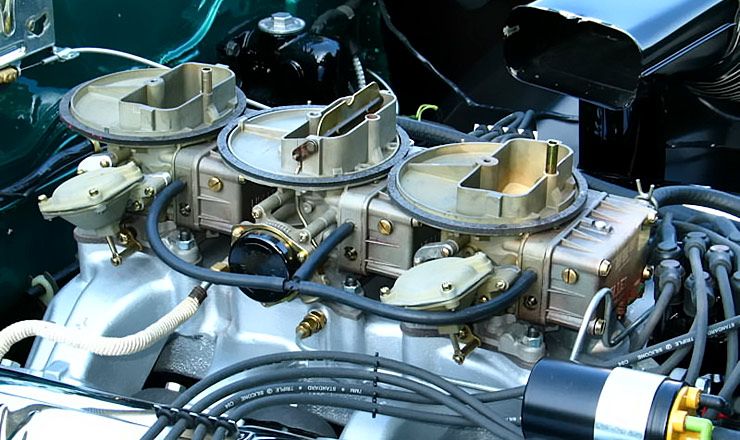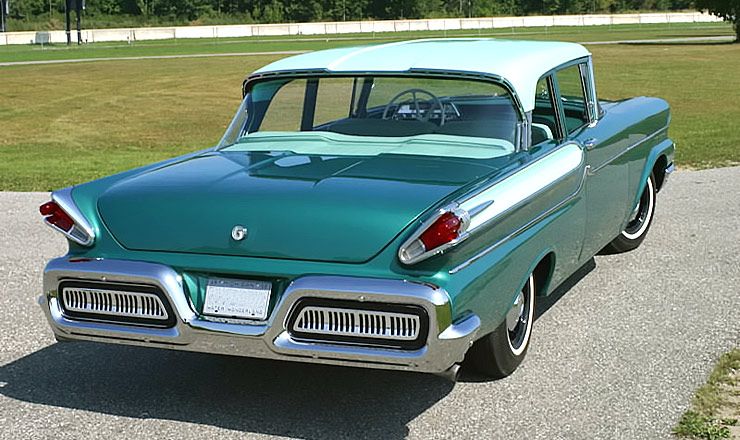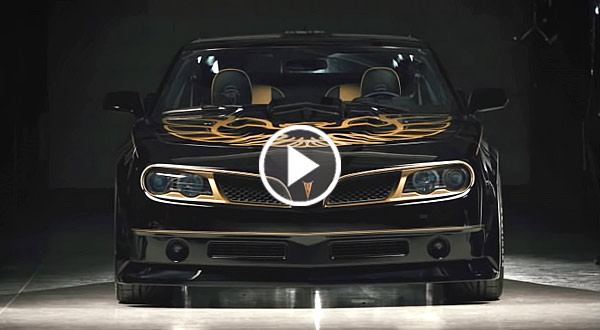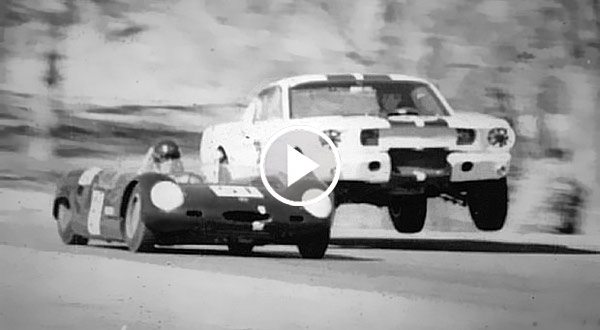The M-E-L block is unique and not related to the more common FE series, though both are deep-skirt designs.
“The biggest difference between it and the FE,” Brian explains, “is that the bottom of the head is flat and the combustion chamber is in the block. The deck is at a 10-degree angle to the cylinder bore centerline.”
Valves, especially for a 1950s engine, were huge, at 2.15 intake and 1.77 exhaust. Brian had the heads tested on a flow bench, and surprisingly, they flowed better than his ’64 427 Marauder heads.
Other engine details are conventional — hydraulic cam, shaft-mounted rockers, cast aluminum pistons and 2-bolt mains. Exhaust manifolds are ram’s horn style, reminiscent of early small-block Chevrolets.
Transmission choices were the old cast iron Merc-O-Matic, or a column –shift 3-speed manual. Brian went with the stick. It differs from the Ford gearbox in that it has bigger shafts and gears.
Brian disassembled the body, then took it to restoration ace Scott Tiemann in Portland, Michigan for his special touch. Ditto the frame. A quintessential ‘50s color scheme, Holly Green with Parisenne Green accents, was chosen.
Brian built the engine (it dyno’d at 420hp @ 5500 rpm), axle, chassis, and freshened up the factory heavy-duty Borg-Warner 3-speed. He got original seatcover material from SMS Auto Fabric in Oregon, and a friend’s wife stitched it together. He pieced the exhaust system together and had it finish welded, then coated. Brian used NOS parts in key places like taillights, trunk medallion, lenses, electrical switches, valve covers, and front grills and rear bumper inserts. All optional extras like heater, clock, and radio were deleted.
As the finished product took shape, it was clear that this was going to a very special car. It debuted at Detroit’s Autorama, an indoor show in Cobo Hall, where Motor City’s hardcore car enthusiasts did a collective head scratch. A steady stream of people filed by and stared in wonderment, only to return with friends who did likewise. Not surprisingly, it won 1st Place in the 58-65 Restored class.
Continue on the NEXT PAGE














Facebook Comments